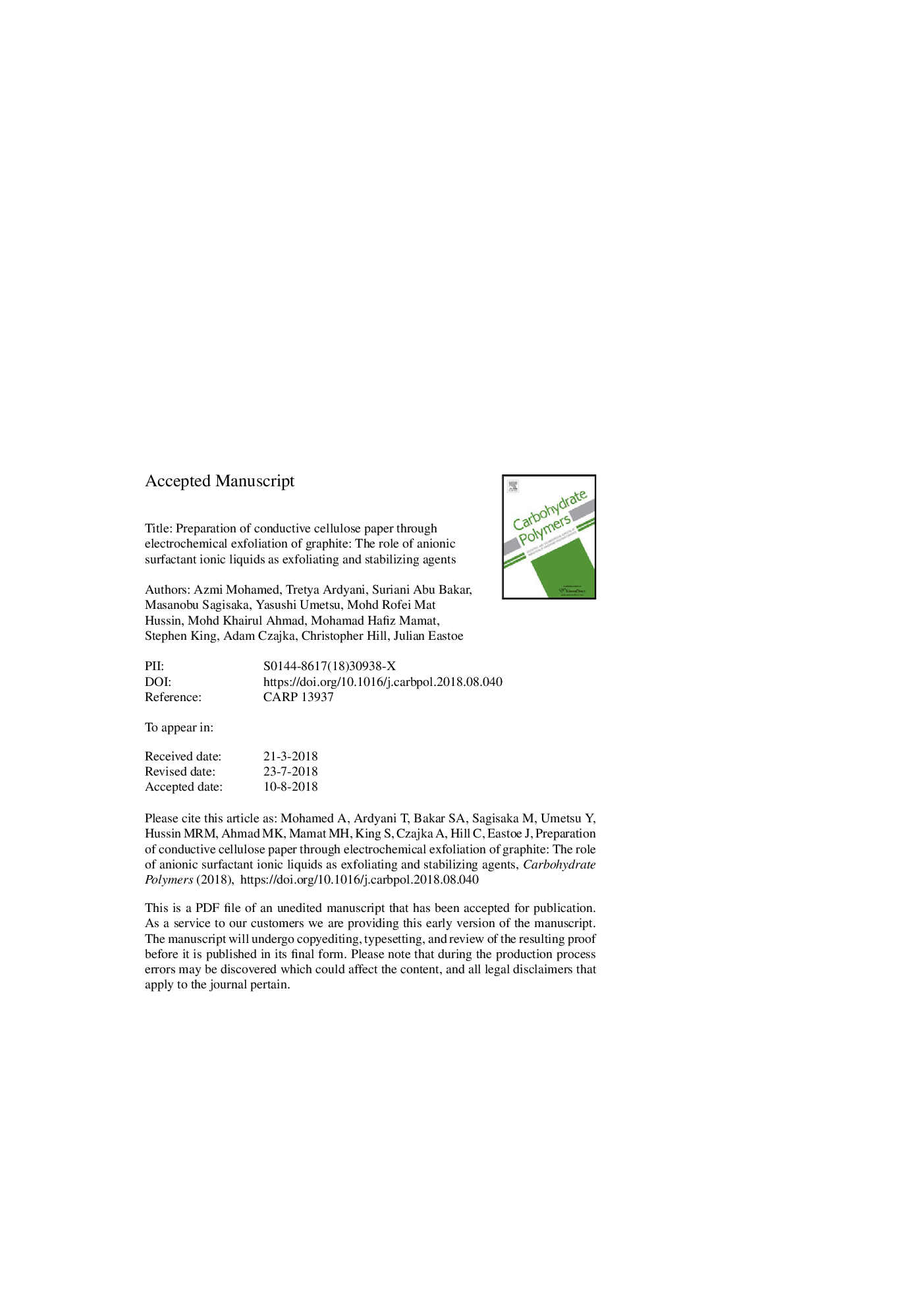| Article ID | Journal | Published Year | Pages | File Type |
|---|---|---|---|---|
| 8942926 | Carbohydrate Polymers | 2018 | 46 Pages |
Abstract
A facile electrochemical exfoliation method was established to efficiently prepare conductive paper containing reduced graphene oxide (RGO) with the help of single chain anionic surfactant ionic liquids (SAILs). The surfactant ionic liquids are synthesized from conventional organic surfactant anions and a 1-butyl-3-methyl-imidazolium cation. For the first time the combination of SAILs and cellulose was used to directly exfoliate graphite. The ionic liquid 1-butyl-3-methyl-imidazolium dodecylbenzenesulfonate (BMIM-DBS) was shown to have notable affinity for graphene, demonstrating improved electrical properties of the conductive cellulose paper. The presence of BMIM-DBS in the system promotes five orders of magnitude enhancement of the paper electrical conductivity (2.71âÃâ10â5 S cmâ1) compared to the native cellulose (1.97âÃâ10â10 S cmâ1). A thorough investigation using electron microscopy and Raman spectroscopy highlights the presence of uniform graphene incorporated inside the matrices. Studies into aqueous aggregation behavior using small-angle neutron scattering (SANS) point to the ability of this compound to act as a bridge between graphene and cellulose, and is responsible for the enhanced exfoliation level and stabilization of the resulting dispersion. The simple and feasible process for producing conductive paper described here is attractive for the possibility of scaling-up this technique for mass production of conductive composites containing graphene or other layered materials.
Related Topics
Physical Sciences and Engineering
Chemistry
Organic Chemistry
Authors
Azmi Mohamed, Tretya Ardyani, Suriani Abu Bakar, Masanobu Sagisaka, Yasushi Umetsu, Mohd Rofei Mat Hussin, Mohd Khairul Ahmad, Mohamad Hafiz Mamat, Stephen King, Adam Czajka, Christopher Hill, Julian Eastoe,
